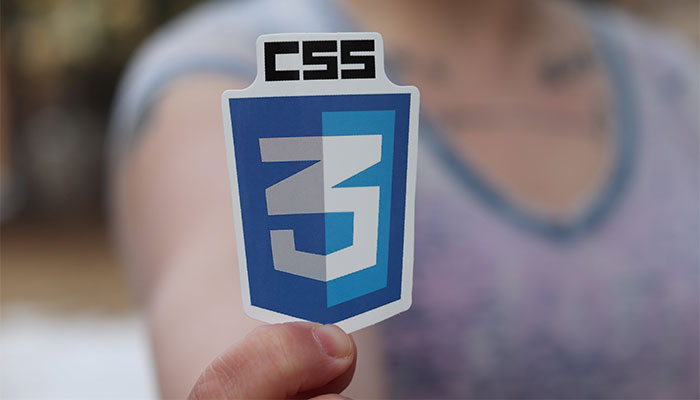Creating a visually stunning website demands more than just an understanding of HTML or JavaScript; it requires mastery over CSS or Cascading Style Sheets. This powerful language is the backbone of web design, dictating how elements are displayed on the screen. In this comprehensive guide, we’ll embark on a step-by-step journey towards mastering CSS – honing your skills to design beautiful, responsive, and user-friendly websites.
Table of Contents
Mastering CSS Guide:
Chapter 1: CSS Fundamentals
Understanding CSS: The Basics
Before diving into the intricacies, it’s crucial to grasp the basics. CSS is used to style the visual presentation of a web page, allowing you to apply styles to HTML elements. It separates content (HTML) from design (CSS), making it easier to maintain and update the look of a website without altering the underlying structure.
Selectors, Properties, and Values
At its core, CSS operates on a simple principle: selectors, properties, and values. A selector targets the HTML element you want to style, a property specifies what you want to change (like color, font, or width), and the value determines how you want to change it.
selector {
property: value;
}
Incorporating CSS into Your Web Pages
There are three ways to include CSS in your HTML: inline, internal, and external. Inline styles are placed directly within the HTML tags, internal styles are embedded in the <head> section of the HTML file using the <style> tag, and external styles are placed in separate .css files that are linked to the HTML using the <link> tag. For maintainability and scalability, external CSS is the best practice.
Chapter 2: CSS Layout Techniques
The Box Model
Every element in CSS is modeled as a box, comprising margins, borders, padding, and the actual content. Understanding this model is vital as it affects how elements stack and interact with each other on the page.
Display Property
The display property is fundamental in CSS as it determines how elements are shown. Block elements like <div> and <p> consume the full width of their containers, whereas inline elements like <span> and <a> do not break the flow of content. There’s also an inline-block display, which allows elements to sit next to each other and accept width and height values.
Flexbox and Grid
Modern layout techniques like Flexbox and CSS Grid have revolutionized web design. Flexbox is excellent for one-dimensional layouts – think of a navigation bar or a single row or column of items that need to distribute space dynamically. Grid, however, is two-dimensional, capable of handling rows and columns and perfect for more complex layouts.
Chapter 3: Advanced Styling with CSS
Styling Text and Fonts
Fonts and typography are central to good design. CSS offers properties such as font-family, font-size, font-weight, and line-height to control text appearance. For a wider range of typographic options, web fonts can be imported using @font-face services like Google Fonts.
Colors and Backgrounds
The visual appeal of a website highly depends on the color schemes and background styles. With CSS, you can specify color using names, hex codes, RGB, or HSL values. Moreover, CSS3 introduced gradients and multiple backgrounds for a single element which allows for complex and attractive designs.
Pseudo-Classes and Pseudo-Elements
Pseudo-classes (like :hover) enable the styling of an element when it’s in a certain state. Pseudo-elements (like ::before and ::after) allow you to insert and style content that isn’t in the HTML. These selectors can create interactive and engaging elements without the need for additional markup.
Chapter 4: Responsive Design with CSS
Media Queries
With various devices in use today, responsive design is not an option but a necessity. Media queries are the tool of choice for creating responsive websites. By allowing styles to change based on the characteristics of the device (such as width, height, or orientation), a website can adapt to look as good on mobile as it does on a desktop.
Mobile-First Approach
Adopting a mobile-first approach involves designing with the smallest screen in mind and then progressively enhancing the design for larger screens. It’s a principle that promotes better performance and user experience on mobile devices.
Viewport and Units
The viewport meta tag and relative units like percentages, em, rem, and vw/vh are essential in creating a fluid design that adjusts smoothly to different screen sizes.
Chapter 5: Techniques for Seamless User Experience
Transitions and Animations
To take user experience to the next level, CSS3 introduced transitions and animations. Well-timed and smooth transitions can guide a user’s attention and enhance the feel of the website, while keyframe animations can bring a website to life with continuous state changes.
Transforms
The transform property in CSS3 allows elements to be rotated, scaled, skewed, or translated, offering a powerful toolset for creative styling and interaction.
Chapter 6: Preprocessors and CSS Architecture
Intro to Preprocessors
Although CSS is powerful, it can also become complex in large projects. Preprocessors like Sass, LESS, and Stylus extend CSS with features like variables, nesting, mixins, and functions, enabling more maintainable and readable stylesheets.
Organizing CSS Efficiently
CSS architecture methodologies like OOCSS, SMACSS, and BEM can help organize and modularize styles, making them easier to manage, especially when collaborating with a team.
Chapter 7: Debugging and Optimization
Browser Developer Tools
Developer tools in modern browsers are indispensable for debugging CSS. They allow you to inspect and modify CSS in real time, understand how styles are applied, and troubleshoot issues swiftly.
Performance Tips
Efficient CSS can significantly impact load times and performance. Optimize by consolidating and minifying CSS files, utilizing CSS shorthand properties, and avoiding overly complex selectors.
Conclusion
By following this step-by-step guide, you’ll progress from CSS fundamentals to advanced techniques, paving the way to create beautiful, responsive, and user-friendly websites. Remember that like any skill, CSS mastery requires consistent practice and staying updated with the latest web standards and trends. Get ready to channel your creativity through CSS and embark on the rewarding journey toward designing beautifully styled websites that stand out in the digital landscape.


0 Comments